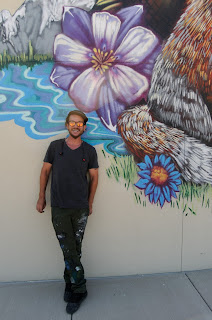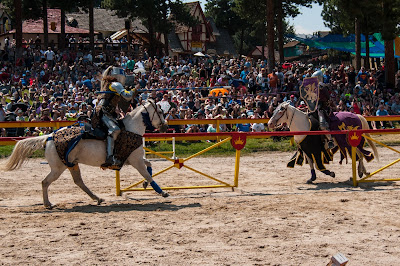Cattle, People and the Planet - by Molly Moreschini
Many people today, with the conveniences of fast food, market availability and online shopping, are not pay attention to food they are buying and where it came. Then society is shocked when documentaries surface like, "Food, Inc." and "Meet your Meat" showing the harsh and horrible conditions of feedlots and slaughter houses, straight to your fork. A feedlot is a plot of ground, often near a stockyard, where livestock are gathered to be fattened for market. Thousand of cattle are packed into dirt based yards and nothing but grains and antibiotics are fed to them. They are to be fattened up, and owners receive the biggest profit possible. The conditions are in-humane and the cattle live in constant distress for their short lived lives (2 years before slaughter).

Other issues associated with feedlots are: the excessive respiratory symptoms of neighbors, a rapid increase in drug-resistant infections attributed to an overuse of antibiotics, over 27,000 miles of groundwater and rivers have been contaminated by livestock waste (manure) and they are responsible for 20% of the nations heat trapping methane emissions (according to the U.S. Environmental Protection Agency). While the factory farms are criticized for their cruelty, the danger to the public and environment are remarkably efficient as well. Cattle release 2/3 more methane than the U.S. Oil & Gas industry! Flatulation combined with burps from the 1.5 billion cows in the world (Colorado with 2,600,000 cows) makes the enormous contribution to climate change and global warming. In LaSalle Colorado, producers filter liquids out of the manure and put it in digesters to produce bio-gas, which can be used to generate power. This particular digester has an exclusive contract with an area composting facility. Steps like these make a difference, but it is not enough. Many tests and studies are being done, but there is no easy answer to reducing global warming while ensuring global food demand.
While Colorado is listed as the 10th state with numbers of feedlots, there are also Ranchers all over the state that own grass-fed and range cattle. This gives cattle a better quality of life. Although some of the same environmental issues may still exist, the emissions depend on how animals are raised. The methane released is greater for feeder lots due to the grain and the massive amounts of cattle in a small area. Grass fed cattle are able to lead more natural ways of life, eating grass and hay with no antibiotics, and live in a far less stressful environment.

Cattle are highly intelligent animals and very emotional
as well. Cows can grieve if separated from their herd or if a fellow cow dies. They have moods just like people, and can go from a grumpy in the rain to playing happily in the sun. Cattle can cry tears and will communicate through body language like mimicking behaviors of other cows. Cows experience stress and the life on a ranch in the open fields grazing is so much more humane than feedlots, where cows can experience a constant fear an distress. Ranchers seemed to have a more rooted reasoning for being in the business, opposed to the Feed Farm Industries. Many say it is a way of life and that tradition and cultures are passed on. Tom Ryan, a rancher of 30 years in Rye Colorado states, " I have been taking my cattle to the same butcher every year for 10 years. I did research to make sure I was doing business with a good butcher, that means fast and painless to me." Tom continued, "People have said there is no way I own cattle and am a humanitarian, but they are wrong. I love each animal I own and make sure they live happy lives and even when its time to butcher, I try to make sure they experience the least amount of stress and pain possible. I always feel bad, if you don't feel bad there is something wrong with you..", he paused, "I just want healthy food and I want to feed others healthy food, and there is not a day that I eat beef that I don't give thanks to the cow for
giving me a meal, and nutrition."
While life for the cattle is better on the open range, Ranchers face a problem that feedlots are unaffected by, desertification. Desertification usually occurs when there has been a drought and cattle overgraze an area. This leaves large open areas with no vegetation and the soil is exposed. Soil becomes very dry and the land ostensibly becomes desert-like. The land can be ruin from productivity and it is extremely harmful for the ecosystem.
When asked about desertification, Tom says, "I learn from the animals, and I learn from the land. If it looks like I'm over grazing, I moved them around or sell a few." A solution that is being recently identified as helpful to the Global Warming issues as well as desertification.Rotational grazing is moving grazing life stock between pastures (paddocks) as needed or regularly. Allan Savory, of TED TALKS, says holistic and rotation grazing is actually good for the environment! It prevents desertification as well as pockets of methane gases.The link to his speech is below. https://www.ted.com/talks/allan_savory_how_to_green_the_world_s_deserts_and_reverse_climate_change
Other solutions that have been practiced by people to ensure healthy eating and to avoid harm to animals.Some are making a life change in diet and perhaps choosing a vegan, vegetarian diet. If one is an avid omnivore than consciously choosing to consume less beef and milk products will reduce the individuals ecological footprint. We must, and can tackle these interwoven problems together in ways that are both equitable and efficient. Beef consumption is thought to double in demand by 2050. With the doubling of consumption will come an intensity of our
environmental and humanitarian issues.










Comments
Post a Comment